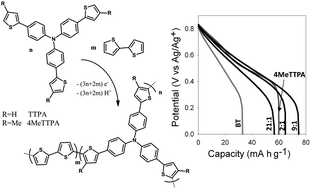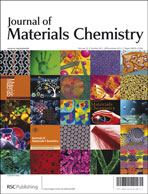Synthesis of high-charge capacity triarylamine–thiophene redox electrodes using electrochemical copolymerization
Abstract
Growing interest in electric transportation and renewable energy generation places a high burden on the development of new materials and devices capable of storing and delivering energy at high rates. We have previously shown that efficient, reversible redox couples can be incorporated in conventional conducting


 Please wait while we load your content...
Please wait while we load your content...